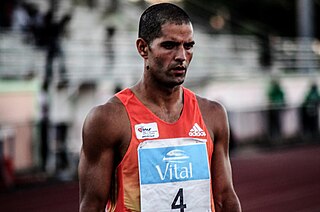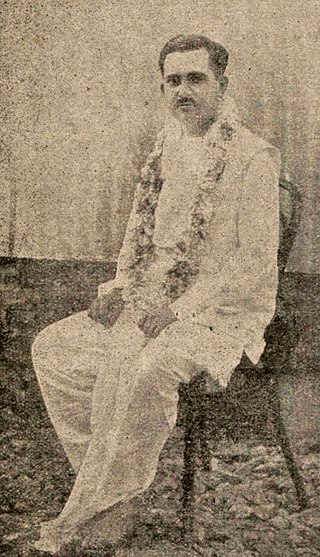
Mauritius, officially the Republic of Mauritius, is an island nation in the Indian Ocean, about 2,000 kilometres off the southeastern coast of East Africa, east of Madagascar. It includes the main island, as well as Rodrigues, Agaléga, and St. Brandon. The islands of Mauritius and Rodrigues, along with nearby Réunion, are part of the Mascarene Islands. The main island of Mauritius, where the population is concentrated, hosts the capital and largest city, Port Louis. The country spans 2,040 square kilometres (790 sq mi) and has an exclusive economic zone covering 2,300,000 square kilometres.
The known and sometimes formally documented history of Mauritius begins with its possible discovery by Austronesians under the Austronesian expansion from pre-Han Taiwan, circa 1500 to 1000 BC, and then by Arabs,, followed by Portuguese and its appearance on European maps in the early 16th century. Mauritius was successively colonized by the Netherlands, France and Great Britain, and became independent on 12 March 1968.

Port Louis is the capital city of Mauritius. It is mainly located in the Port Louis District, with a small western part in the Black River District. Port Louis is the country's financial and political centre, and the most populous city. It is administered by the Municipal City Council of Port Louis. According to the 2018 census conducted by Statistics Mauritius, the population was 147,066.

Bertrand-François Mahé, comte de La Bourdonnais was a French sea captain, colonial administrator and nobleman who was employed by the French East India Company.
Moka is a village in Mauritius located mainly in the Moka District. The western part of the village lies in the Plaines Wilhems District. Since 1967 it forms part of Constituency No. 8 Quartier Militaire and Moka. The village is administered by the Moka Village Council under the aegis of the Moka District Council. According to the census made by Statistics Mauritius in 2011, the population was at 8,846. The elevation is 203 meters and can be up to 425 meters in some places. Moka is directly on the other side of the Moka Range from Port Louis. The village is close to the mountain Le Pouce and the town Beau-Bassin Rose-Hill. Réduit is a suburb of the village where the State House and University of Mauritius is situated. The village is also home to the Mauritius Broadcasting Corporation and the Mahatma Gandhi Institute.

Sir Seewoosagur Ramgoolam, often referred to as Chacha Ramgoolam or SSR, was a Mauritian physician, politician, and statesman. He served as the island's only chief minister, first prime minister, and fifth governor-general.

Sir Abdool Razack Mohamed was an Indian-born former senior minister in the pre and post-independence cabinet of Mauritius.
Sookdeo Bissoondoyal was a Mauritian politician and one of the leading figures in the nation's independence movement.
The State House is the official residence of the President of Mauritius. Originally Le Réduit, it was built as a fortress for defence against attack by Pierre Félix Barthelemy David in 1749. The mansion is in Réduit, Moka, near of the University of Mauritius and the end of the Plaines Wilhems District. It used to serve as the residence for former governors of Mauritius, but now it is the residence of the President. It is built on 97 hectares of land. The château has a garden where a multitude of flowers grow, as well as exotic and native trees. The château is open to the public two days a year, in October and March. The house has persisted through history; it was destroyed by a cyclone, rebuilt, and has been renovated since. It is also used by the military.

Corruption in Mauritius follows the familiar patterns of state-based corruption, namely government officials abusing their political powers for private gain in the country of Mauritius.

Guillaume Thierry is a track and field athlete from the Republic of Mauritius. He first represented his country at pole vault in which he competed at the 2003 World Youth Championships in Athletics held in Sherbrooke, Canada. He now competes in the decathlon and holds the Mauritian national record set on 11–12 September 2013 in Nice, France at the VII Francophone Games. He is the first Mauritian ever to score more than 7000 points in this event.

Intense Tropical Cyclone Berguitta was a strong tropical cyclone that caused flooding in Mauritius and Réunion in January 2018. The third tropical system and first intense tropical cyclone of the 2017–18 South-West Indian Ocean cyclone season, Berguitta originated from an area of scattered thunderstorms southwest of the Chagos Archipelago on 10 January. It slowly organised as it moved southwards, and became a tropical storm as it turned west on 13 January. Berguitta then rapidly intensified to achieve its peak intensity on 15 January while stalling north of Rodrigues. At the time, the cyclone possessed 10-minute sustained winds of 165 km/h (105 mph), 1-minute sustained winds of 195 km/h (120 mph), and a minimum central pressure of 960 hPa (28.35 inHg). Berguitta weakened as it moved slowly west-southwestwards on 16 January, and the cyclone degraded to a tropical storm by 17 January. It accelerated southwestwards over Mauritius and Réunion on 18 January, before degenerating to a post-tropical cyclone the next day. The remnants of Berguitta transitioned into an extratropical cyclone and dissipated over the Indian Ocean on 24 January.
The 1968 Mauritian riots or Bagarre raciale Plaine Verte refers to a number of violent clashes that occurred in the Port Louis neighbourhoods of Cité Martial, Bell Village, Roche Bois, St. Croix, Cité Martial and Plaine Verte as well as in the village of Madame Azor near Goodlands in Mauritius over a period of ten days, six weeks before the country's declaration of independence on 12 March 1968.

Sir Charles Gaëtan Duval QC was a barrister, statesman and politician from Mauritius who was the leader of the Parti Mauricien Social Démocrate (PMSD) political party.
The 1975 Mauritian student protest riots refer to a students' protest marches which turned violent in various parts of the island of Mauritius, Indian Ocean on Tuesday 20 May 1975.

Basdeo Bissoondoyal was a Mauritian social worker, educator and writer who played an important role in the pre-Independence politics and independence movement on the island of Mauritius. He is also sometimes referred to as "Pandit Basdeo Bissoondoyal" or "Professor Basdeo Bissoondoyal".
Sir Satcam Boolell GCSK QC was a Mauritian politician who served as member of the Legislative Assembly in Mauritius. He died on March 23, 2006, in Curepipe. He was also known as "Somduth" by his peers and family members.
Harisun Boodhoo more commonly known as Harish Boodhoo, is a Mauritian political figure who served as Deputy Prime Minister of Mauritius from 11 June 1982 to 21 August 1983. He was elected Member of Parliament (MP) in 1976, 1982 and 1983 in Rivière des Anguilles and Souillac.
The Independent Forward Bloc (IFB) was a political party in Mauritius.
Socio-Cultural Group is a term which is used on the island of Mauritius to refer to private organisations whose primary objectives are to consolidate human and moral values, strengthen the family unit and promote religious and cultural values. These groups are also known as socio-cultural movements or socio-cultural associations.
















